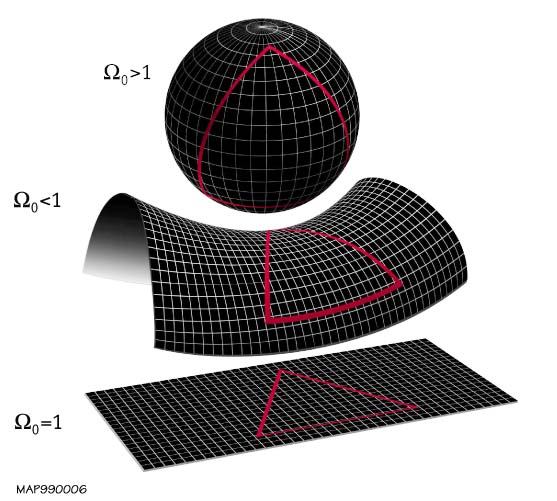Is the universe flat, spherical or hyperbolic?
Cosmic Topology is the name given to the study of the overall shape of the universe, which involves both global topological features and more local geometrical properties such as curvature. Whether space is finite or infinite, simply-connected or multi-connected like a torus, smaller or greater than the portion of the universe that we can directly observe, are questions that refer to topology rather than curvature. A striking feature of some relativistic, multi-connected “small” universe models is to create multiples images of faraway cosmic sources.

While the most recent cosmological data fit the simplest model of a zero-curvature, infinite space model, they are also consistent with compact topologies of the three homogeneous and isotropic geometries of constant curvature, such as, for instance, the spherical Poincaré Dodecahedral Space, the flat hypertorus or the hyperbolic Picard horn. After a “dark age” period, the field of Cosmic Topology has recently become one of the major concerns in cosmology, not only for theorists but also for observational astronomers, leaving open a number of unsolved issues. (source: Scholarpedia)
